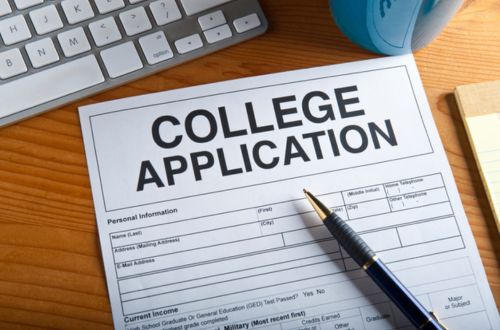

Applying to college is often filled with equal parts anticipation and anxiety. With acceptance rates at top universities continuing to decline—Harvard’s Class of 2027 admitted just 3.41% of applicants according to The Harvard Crimson—students are constantly looking for any sign of encouragement. One such signal comes in the form of a “likely letter.” These rare early notifications are not official acceptance letters, but they are as close as it gets. This article explores exactly when are likely letters sent out, why colleges send them, and what students should know if they receive (or don’t receive) one.
What Are Likely Letters?
A likely letter is a communication sent by a college admissions office to a small group of applicants, informing them that they are very likely to be admitted once official decisions are released. While not binding, this letter functions as an informal heads-up that an offer of admission is almost certain, assuming the student maintains their academic and personal performance.
These letters are usually reserved for:
- Recruited athletes, particularly at Ivy League schools where athletic scholarships are not offered.
- Top-performing academic students with national or international recognition.
- Students from underrepresented backgrounds or those who bring unique talents to campus.
Think of it as the school saying: “You’re not officially in yet, but we want you to know that your chances look excellent.”
Why Colleges Send Likely Letters
Colleges use likely letters strategically to attract, reassure, and retain top applicants who are likely to have multiple offers from elite institutions. The motivations include:
Recognition and Motivation
By notifying high-achieving students early, colleges validate the applicant’s hard work. This builds goodwill and excitement, which can strengthen the emotional connection between student and institution.
Yield Management
Yield—the percentage of admitted students who choose to enroll—is a key ranking metric. Likely letters help schools increase their chances of securing commitments from exceptional candidates who may otherwise lean toward other prestigious universities.
Athletic Recruitment
Since Ivy League schools cannot provide athletic scholarships, likely letters are a crucial tool for coaches to secure commitments from student-athletes while remaining compliant with conference rules.
Encouraging Continued Effort
A likely letter reminds students to maintain strong grades and conduct. While the letter is positive, it’s conditional on the applicant finishing their senior year with consistent performance.
When Are Likely Letters Sent Out?
So, when are likely letters sent out to students each year? The answer depends on the institution, but there are general patterns across Ivy League and other highly selective schools.
General Timeline
- October 1 (senior year): Ivy League rules allow schools to begin sending likely letters to recruited athletes who have completed their applications.
- Mid-February to early March: The majority of likely letters are distributed during this window. Colleges use this period to identify top candidates before regular decision notifications go out in late March or early April.
- March 15: Often cited as a common deadline for likely letters, particularly among Ivy League schools.
School-by-School Variations
- Columbia University often begins sending likely letters as early as mid-February.
- Brown University may wait until early March before extending theirs.
- Cornell University has historically aligned with mid-February to mid-March, clustering around the March 15 mark.
- Other Ivies and top schools such as Harvard, Yale, and Stanford follow similar timelines, with the bulk of letters sent before official admissions decisions are released.
Early Action/Early Decision Exceptions
For applicants who apply under Early Action (EA) or Early Decision (ED), likely letters may occasionally be sent as early as December. However, this is less common and typically reserved for special circumstances, such as high-priority athletic recruits.
What Do Likely Letters Say?
Though wording varies by institution, likely letters usually:
- Indicate the applicant is very likely to be admitted.
- Highlight impressive aspects of the student’s application.
- Encourage the student to view the school as their top choice.
- Occasionally invite them to exclusive events or receptions for likely admits.
- Remind students that official admissions decisions will be released later and final admission depends on continued strong performance.
The tone is warm, congratulatory, and carefully crafted to make students feel both accomplished and wanted.
Who Receives Likely Letters?
Only a very small percentage of applicants receive likely letters. These are typically individuals who:
- Excel academically at a national or international level.
- Demonstrate leadership or talent in unique, sought-after areas.
- Are recruited athletes, especially in sports where schools are trying to remain competitive.
- Represent backgrounds or experiences that align with the institution’s diversity goals.
It’s important to note: not receiving a likely letter does not mean rejection. The vast majority of admitted students never receive one.
What It Takes To Get a Likely Letter
Academic Excellence
A stellar GPA, rigorous coursework (AP, IB, or honors), and top percentile standardized test scores (where applicable) are essential.
Well-Rounded Profile
Admissions offices often look for leadership in extracurriculars, artistic accomplishments, community service, or unique personal stories.
Demonstrated Interest
Engaging with the school through campus visits, virtual events, and application essays that align with institutional values can make a student stand out.
Strategic School Selection
Since not all schools send likely letters, students should recognize that Ivies, Stanford, MIT, Duke, and UChicago are among those most likely to issue them.
Schools Known to Send Likely Letters
While practices can vary by year, these schools have historically been associated with sending likely letters:
- Ivy League: Harvard, Yale, Princeton, Columbia, Penn, Dartmouth, Brown, Cornell.
- Other Top Universities: Stanford, MIT, Duke, University of Chicago, Caltech, USC, UCLA, Vanderbilt, UVA, UNC–Chapel Hill.
- Liberal Arts Colleges: Amherst, Williams, Smith, Bowdoin, Barnard, Brandeis, Grinnell, Rice, College of William & Mary, Clark University.
FAQs About Likely Letters
Do likely letters guarantee admission?
No. They are a strong signal but not an official offer. Students must maintain academic performance and good conduct.
Can you be rejected after a likely letter?
It is possible, though rare. A significant drop in grades or disciplinary issues could change the outcome.
Are likely letters common?
No. They are rare and reserved for standout applicants. Most admitted students never receive one.
Is it a bad sign if I don’t get a likely letter?
Not at all. Most accepted students learn of their admission on the official decision date.
Final Thoughts
Likely letters remain one of the most unique and coveted aspects of the college admissions process. They offer reassurance to an elite subset of applicants, signaling that their hard work and exceptional achievements have been recognized at the highest levels. Still, they are rare. Most students admitted to Ivy League and other top schools will not receive one.
For those wondering when are likely letters sent out, the key timeframe is mid-February through mid-March, with some early exceptions for recruited athletes and Early Action/Early Decision applicants. If you don’t receive one, don’t panic—your chances remain very much alive until official admissions day.
In the end, whether or not a likely letter arrives, what matters most is presenting a strong, authentic application that highlights both academic achievement and personal growth.


